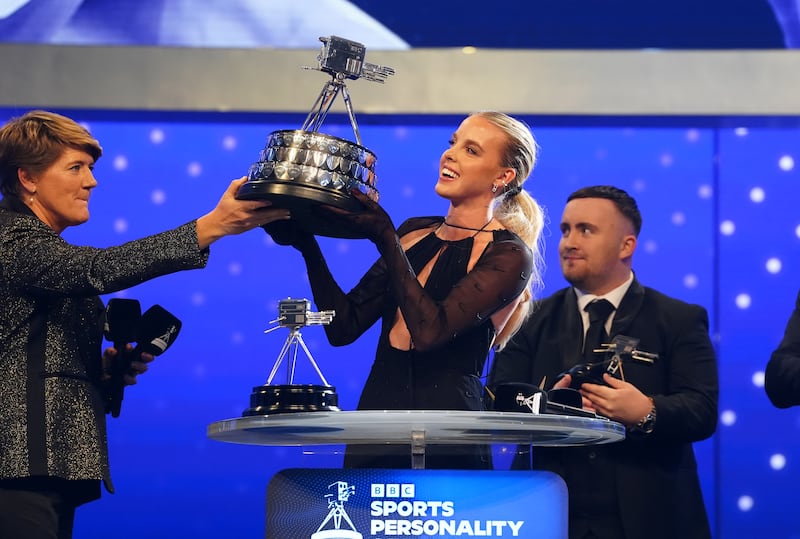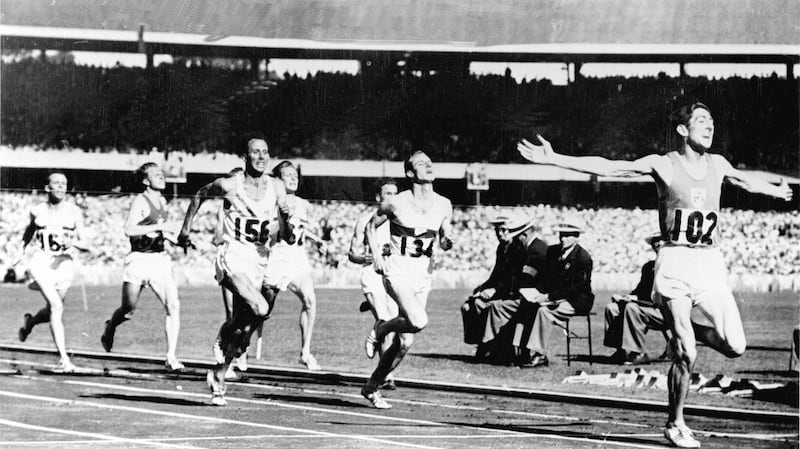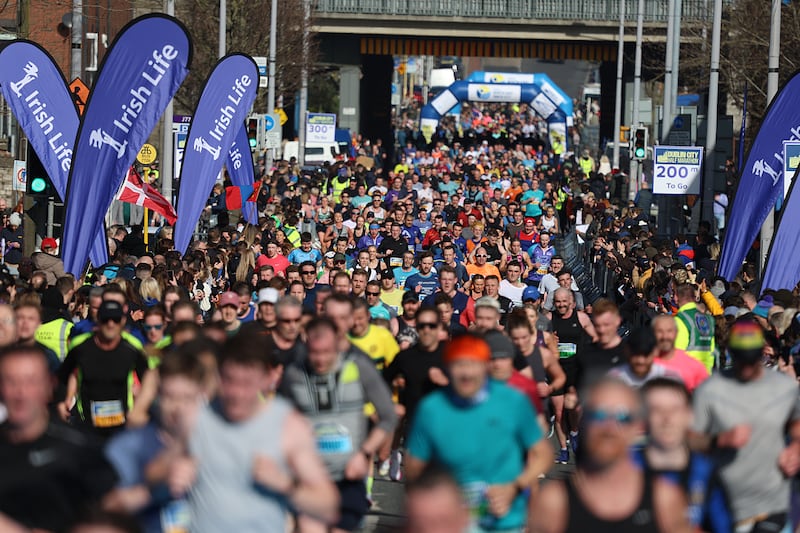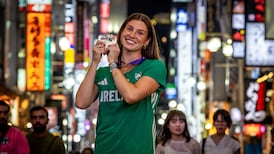In its now 80 years of enduring publication Athletics Weekly has had plenty of apt and iconic cover shots, and rightly appearing among them on the front of the latest February issue (the magazine went monthly five years ago) is Keely Hodgkinson, unquestionably the face of British athletics and one of the best runners in the world.
I willingly inherited several boxes of back issues of Athletics Weekly starting from the early 1960s (the magazine was founded in 1945 by Jimmy Greene in the bedroom of his bungalow in Kent); these days my subscription is strictly digital, but the publication still delivers plenty of wordy and worthy content. Now read on.
The Hodgkinson cover shot includes the caption “The Star Attraction”, a reference not just to her current status in global athletics, but also to the Keely Klassic indoor meeting in Birmingham next Saturday, where the 22-year-old will race for the first time since winning the Olympic 800 metres gold medal in Paris last August, having gone unbeaten in 2024.
That race, incidentally, was the most-watched event on the BBC throughout the entire Paris Olympics, with 9.1 million people tuning in as Hodgkinson’s bold front-running move with a lap to go inside the Stade de France saw her hold off Kenya’s world champion Mary Moraa, improving on the Olympic silver medal she won as a 19-year-old in Tokyo in 2021.
Organisers of Dublin City Half Marathon announce new date and ballot-based entry
A bumper year for Irish athletics: 25 medals won and the athletes who won them
Paddy Power is not so mischievous any more but there’s still a dark side to what it does
Kate O’Connor’s calm mindset was her greatest asset during medal-winning year
That performance also helped to crown Hodgkinson the BBC Sports Personality of the Year for 2024, ahead of teenage darts sensation Luke Littler, with her husband-and-wife coaching team of Trevor Painter and Jenny Meadows also jointly named BBC Sports Personality Coach of the Year. A nice sweep for any sport.
Part of Hodgkinson’s appeal might well be her simple and no-nonsense approach to the sport, and that of her coaches, Painter helping to make that point when telling Athletics Weekly that the preparations for Paris included some old-fashioned sand dune training, at Formby beach, a short drive west from her home in Manchester and Painter’s home in Wigan. Ireland’s Sarah Healy is also part of this training group.
Just because you’re over the hill or, like me, long past your running prime doesn’t mean you can’t still take a tip from this. Sand dune training is the one session most distance runners love to hate, knowing full well how cruelly tough it is to run uphill against the stubborn resistance of the grainy sand – or indeed downhill for that matter – while also realising this is exactly what develops potentially untapped reserves of strength and stamina, all while demanding no compromise on good running technique.
“It’s a really brutal session,” Painter explained. “It’s formulates your mind as well as your physiology.” And trust me, it also forces runners of all abilities to address any weaknesses, rather than just work on their strengths, because there is no hiding from the truth of all that on the sand dunes.
Sand dune training has drifted in and out of popularity over the years. There is a magnificent picture of Ronnie Delany in his book Staying the Distance training on the sand dunes of Santa Cruz on the Pacific Coast, just south of San Francisco, in the spring of 1960. Delany was based there at the time, working as a representative for Aer Lingus, and often linked up with Don Bowden, the first sub-four minute miler from the US, in their preparations for the 1960 Olympics in Rome.

Even when running up against the shifting, sandy gradient, Delany’s elegant if slightly upright style is unmistakable from that which saw him win the Olympic 1,500 metres gold medal in Melbourne four years previously. Sadly, an Achilles tendon injury would ultimately deny Delany the chance to defend his title in Rome, although, as it transpired, that race was won by another willing servant to sand dune training.
“You might think you can run faster than me,” Percy Cerutty, Australia’s legendary distance coach, would snarl at his young pupil Herb Elliott, “but you’ll never run harder than me.”
Cerutty grew up in extreme poverty and didn’t taste any kind of fruit until he was 15. In 1942, at age 47, his health had failed so dramatically that he decided to do something dramatic about it. He revolutionised his diet, eating only raw, unprocessed food, and embarked on a punishing exercise regime. Five years later, at age 52, he ran a marathon in exactly three hours.
Keen to spread his running gospel, Cerutty set up a training camp at the small seaside town of Portsea, on the Victorian coast, perfect for his murderous training sessions over the vast sand dunes. Among the runners first drawn there were John Landy, who had come second to Delany in Melbourne, and, later, Elliott, who won the gold medal in Rome in a then world record of 3:35.6 before retiring two years later, undefeated in 44 races over the 1,500m and the mile. Cerutty continued coaching until 1975, when one evening he sat on those same sand unes at Portsea, took a deep breath, and exhaled his last.

Steve Ovett, who was favourite to win the Olympic 1,500m gold medal in Moscow in 1980, only to end up winning the 800m instead, was also a frequent (if perhaps slightly less willing) proponent of sand dune training, usually at Merthyr Mawr in south Wales, along with his coach Harry Wilson.
Hodgkinson, meanwhile, has made no secret of her record-breaking ambitions this year, starting in Birmingham next Saturday, where she is targeting the 800m world indoor record of 1:55.82 belonging to Jolanda Ceplak from Slovenia since 2002, and set coincidentally on March 3rd, the same day Hodgkinson was born.
That’s proved a tough record to break for several reasons. Ceplak was pressed all the way at those 2002 European Indoor Championships in Vienna by home favourite Stephanie Graf. Five years later, Ceplak tested positive for EPO, and in 2010 Graf was also banned for the attempted use of a prohibited doping method.
Outdoors, Hodgkinson has an 800m best of 1:54.61, set when winning the London Diamond League last July, and this summer will also target the oldest and one of the most controversial world records in the books: the women’s 800m mark of 1:53.28 set back in 1983 by Jarmila Kratochvílová from the former Czechoslovakia.
Hodgkinson will need to improve by almost a second and a half; still, it’s clearly within her range and ability in the coming years. The tip is in repeatedly running up the sand dunes at Formby beach, helping to point the way.
















